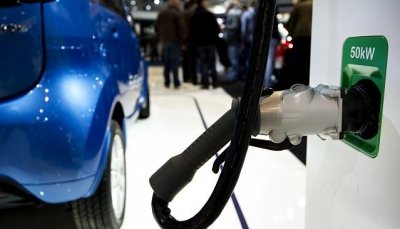A recent Climate Action webinar brought together Dr. Bernhard Blattel, Vice President of Mobility at BMW Group and Jose Viegas, Secretary General of the OECD’s International Transport Forum to assess the key factors needed to accelerate sustainable urban mobility solutions ahead of COP21.
Urban mobility services
Whilst BMW are most widely known as a vehicle manufacturer, diversifying their portfolio to include the innovative i3 electric model, Dr. Blattel argued that the creation of services to facilitate car sharing, improved parking and integration of charging infrastructure is the key to increasing the use of electric vehicles (EVs) in urban areas.
BMW Mobility is currently working to develop several such supporting services, including Drive Now– a flexible car sharing app that currently hosts 470 customers across 8 cities. Dr. Blattel also discussed the need to tackle the issue that 30% of all congestion in cities is caused by drivers looking for a parking space, with BMW i Ventures recently investing in Just Park, a service that enables drivers to book private driveways for the time at which they need to park.
The benefits of mobility service provision was echoed by Jose Viegas of the OECD’s International Transport Forum, who highlighted the need for populations to move as quickly as possible towards viewing mobility as a service as opposed to relying on private car ownership. Viegas outlined that car sharing services hold the potential to do this by reducing feelings of ‘range anxiety’ around a drivers flexibly to travel over long distances, as EV provision would be made more widely available.
By developing attractive opportunities for EV sharing, Dr. Blattel described the way in which this can solve the ‘catch 22’ of either first installing EVs or the supporting infrastructure, as it becomes viable for a company to simultaneously install 100 vehicles along with the required charging points for their effective use. Viegas stated that this is an effective way to build initial capacity- driving scale without costing the tax payer money.
City level implementation
Whilst viable services now exist to facilitate city level EV integration, challenges remain around convincing regional governments of the benefits of implementing such mobility strategies. Dr. Blattel expressed that an effective approach to overcoming this barrier is to focus on the opportunities that improved urban mobility creates in tackling a city’s existing policy priorities, such as reducing greenhouse gas emissions or pollution levels, in order to demonstrate the value proposition for that particular region.
Viegas addressed the barrier of cost by citing key studies that show that inner-city traffic can be reduced by up to 95% by adopting sustainable mobility solutions, demonstrating that funding for congestion control, road maintenance etc… could easily be re-directed to support policy initiatives that more directly enhance EV integration.
By viewing the impact of improved mobility through this wider lens, clear links can be created between many city level policies. For example, BMW Group’s Light and Charge initiative, which upgrades street lighting to utilise LED technologies, can save enough electricity to charge up to 10,000 EVs. If new lamp posts for these fixtures also incorporated charging stations then the required investment in additional infrastructure would also be significantly reduced.
In creating such successful and logical policy synergies citizens can best be convinced of the value of adopting more sustainable urban mobility practices, as voters need to be on board with the benefits of adjusting their lifestyle and consumer choices. Only with sufficient public buy-in can more meaningful transformation be implemented- for example, if fixed parking provision in residential areas needs to be reutilised to integrate shared car schemes then the economic and social costs of this need to be clear to affect meaningful behavioural change.
Impact of COP21
As the momentum around COP21 continues to build people are becoming more willing to support government intervention and policy action on low carbon development. This convergence of attention makes the conversation around EV integration increasingly tangible, as more cities see the value of adopting meaningful sustainable mobility solutions.
As EV technology costs continue to fall and an increasing number of successful projects change the perception of policy makers and populations, the impetus around sustainable transport will only continue to build towards COP22 and beyond.
Head of Conference Production, Climate Action




